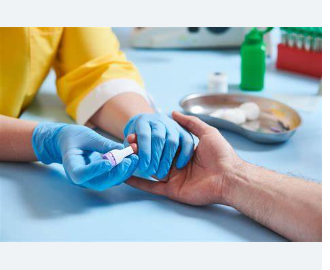Nowadays, people are more and more concerned about their health and are making every possible effort to maintain a healthy lifestyle; with this increasing health concern, the importance of blood tests is also growing alongside the importance of maintaining a healthy lifestyle.
Blood tests are the snapshot of overall health; they are done to identify and keep track of a variety of acute and ongoing medical disorders, including general wellness, diabetes, and cancer. Luckily at-home testing kits are available for blood tests, making it simple for you to obtain accurate results without leaving the house.
Are Home Blood Tests Accurate?
A single drop of blood can reveal your entire health status, and the emerging trend of a blood test at home Dubai has brought more convenience to people’s lives.
You now have the opportunity to perform some of the laboratory work from the convenience of your home, thanks to the growth in at-home testing choices. These blood tests are an easy substitute for lengthy waits at the doctor’s office and can save you from the hectic traffic and chaos of the hospital.
Many blood test kits are available in the market, with a price ranging between $59 to $255, but every technological advancement comes with a drawback, the same with in-home blood testing kits.
Home Blood testing kits do have many benefits and show about 90.6% to 99.9% accurate results, but no one can deny that they sometimes can show negative results due to a variety of reasons. According to their critics, some kits cause unnecessary pain and waste time and money since they are unreliable or give false results if not used properly.
Home Blood Test Kits
These kits, as their names indicate, are ones that consumers may buy for themselves to use at home without first seeing a doctor. A small needle is typically used to collect a blood sample via a finger prick. The blood is drawn into a vial, which is subsequently sent to a lab for testing, and the results are subsequently delivered to the user with or without a clinical interpretation and recommendation. Currently, a wide range of tests, including those for hormone and vitamin levels, CBC tests, blood sugar levels tests, and others, are easily accessible.
Major Drawbacks Of Home Blood Tests.
To understand the drawbacks of home blood testing kits, we first need to understand the difference between finger prick tests and Venous blood tests.
At home, a finger prick test is performed; generally, when you order or buy a blood testing kit, you’ll get a small plastic vial with a finger prick device.
This test involves piercing your fingertip with a device, allowing blood to collect in the vial. The resulting blood drops are called capillary blood.
After collecting blood samples, you have to seal, pack the vial and send it off to the laboratory for further analysis.
Whereas in traditional methods, a skilled phlebotomist will inject a tiny needle into a vein to draw blood from your arm during a venous blood test. It frequently occurs in a hospital or in a doctor’s office.
1. Less Accurate
The health of your body can be precisely measured by using finger-prick blood samples or by phlebotomy. Most health professionals prefer samples of blood drawn from a vein for most blood analyses because all the cells, biomarkers, and proteins circulating in your blood can be seen clearly in venous blood. In comparison, the capillary is actually a combination of capillary, venous, and arterial blood.
Venous blood tests are regarded as the “gold standard” since studies have shown that venous samples obtained by skilled medical personnel can produce more reliable results. A sample from a test performed by a qualified professional is considerably less likely to be impacted by clotting or hemolysis. Vein blood is more likely to provide accurate results for crucial indicators, including complete blood count, glucose, and calcium iron, than capillary blood obtained from a finger prick test.
2. Changes In Tempertaure
Several challenges are associated with sending samples to labs for testing, including transportation times and temperatures. The stability of the sample is also often questioned during transport. According to research, approximately 20–25% of capillary blood samples delivered to laboratories due to less stability and change in temperature are insufficient for testing.
3. Insufficient For Testing.
In a finger prick test, a small amount of blood is collected, making it more difficult to test for more diagnostics because there isn’t enough blood. Some at-home blood testing services need to reduce the number of biomarkers they tested for as a result due to this problem.
4. Dr. Google.
After getting test results from the lab, many people don’t consult with doctors to discuss their reports; instead, they search their queries on different platforms like Google. While it seems that the information provided online is convenient and beneficial, but it can be inaccurate or misguided.
To Wrap Up.
Blood tests at home are becoming the new norm, and if followed correctly, there’s nothing wrong with it. To perform a blood test, make sure the kit you are purchasing is certified and after getting your blood test results, make sure to discuss it with your doctor. You need to follow a few simple rules in blood testing, and you can save yourself from future difficulties.





























